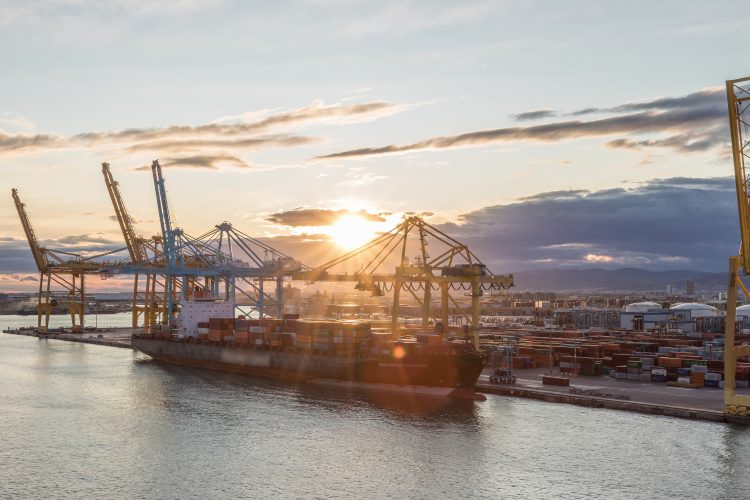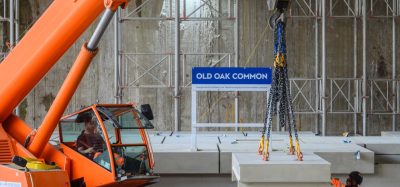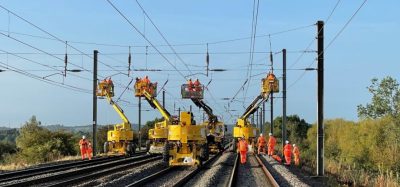CER calls for ambitious rail targets in EU Port Strategy to secure green and resilient growth
Posted: 27 June 2025 | Gabriel Higgins | No comments yet
CER urges the EU to boost rail’s role in ports, supporting climate goals, strategic autonomy, and freight efficiency.


The Community of European Railway and Infrastructure Companies (CER) has issued a sector position paper urging the European Commission to place rail at the core of the forthcoming European Port Strategy. CER argues that enhancing rail integration in European ports is essential for strengthening connectivity, boosting economic competitiveness, and achieving EU climate goals.
As part of a policy initiative currently open for feedback, the European Commission aims to create a long-term strategy to enhance the competitiveness and resilience of European ports. CER highlights that ports are critical entry points to global trade and must be embedded within a modern, multimodal, and climate-conscious logistics system in which rail plays a central role.
Despite its advantages, rail’s modal share of land traffic at major European ports remains low. Ports like Rotterdam, Antwerp-Bruges, and Valencia register rail shares below 10%, whereas Hamburg and Bremerhaven showcase the possibilities of better rail integration, with rail accounting for over 30% and 50% respectively.
CER is calling on the EU to adopt an ambitious benchmark: a minimum 30% rail modal share at European ports.
Backed by recent EU-funded studies, CER argues that rail outperforms road transport in emissions reduction and economic return, even under scenarios where trucking becomes significantly cleaner. Every €1 invested in efficient logistics infrastructure yields €5 in societal value. According to CER, rail-port connectivity supports the EU Green Deal, strengthens supply chains, and enhances Europe’s competitiveness and sovereignty.
To achieve these goals, CER outlines several recommendations:
- Invest in rail-port infrastructure, such as 740-metre tracks and ship-to-rail transfer systems;
- Integrate rail considerations into port expansion plans to prevent future constraints;
- Accelerate implementation of European Transport Corridors (ETCs) and bolster hinterland rail links;
- Expand rail-road terminals along key trade routes;
- Collaborate with non-EU countries to strengthen flows through strategic ports like Piraeus and Thessaloniki;
- Lower port-related rail costs through competition and targeted support;
- Revise the Combined Transport Directive to encourage modal shift and reduce intermodal costs.
CER also underscores the strategic importance of maintaining EU control over critical port assets. With increasing geopolitical uncertainty and trade pressures, European sovereignty requires diversified supply routes, reliable rail infrastructure, and dual-use capability for both civilian and military logistics.
The organisation also calls for robust funding in the next Multiannual Financial Framework (2028–2034). This includes a proposed EUR 100 billion envelope through the Connecting Europe Facility (CEF) to finance port rail integration and infrastructure upgrades.
CER Executive Director Alberto Mazzola stated: “The European Port Strategy must dedicate a significant place to rail. It’s not just a matter of efficiency, it’s a strategic imperative for Europe’s green, secure, and competitive future. Investing in port-rail connectivity is investing in the resilience and sovereignty of the Union. CER members stand ready to work with EU institutions to help shape and implement this strategy. The battle for revitalised European ports will be fought on land and rail is central to winning it.”
Global Railway Review Autumn/ Winter Issue 2025
Welcome to 2025’s Autumn/ Winter issue of Global Railway Review!
The dynamism of our sector has never been more apparent, driven by technological leaps, evolving societal demands, and an urgent global imperative for sustainable solutions.
>>> Read the issue in full now! <<<
Related topics
Digitalisation, European Rail Traffic Management System (ERTMS), Freight, Funding & Finance, Infrastructure Developments, Multimodality, Passenger Experience/Satisfaction, Regulation & Legislation, Safety, Sustainability/Decarbonisation
Related organisations
Community of European Railway and Infrastructure Companies (CER), European Union (EU)







